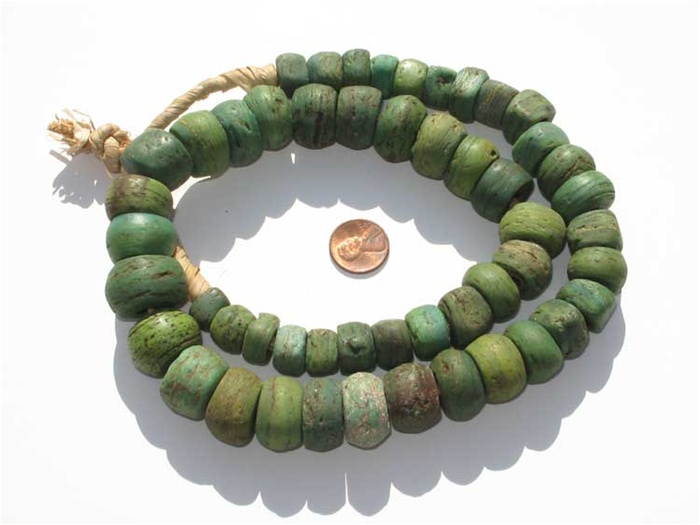Very few African trade beads come from Sudan. But Hebron beads are one of the few that do. Also known as “Kano beads”, they come in several different colors and varieties. The most common are yellow hebron beads, followed by blue hebron beads, then green hebron beads. Occasionally, collectors will come across a strand of mixed polka dot Hebron beads, but these will run $300 and upwards, per strand.
Hebron beads are said to be made with salts from the Dead Sea. The Dead Sea, located in Israel, is the saltiest sea on earth, as well as the lowest point on Earth. It is known for its ability to keep people floating, and is a top tourist attraction in the Middle East.
Green hebron trade beads date back to the mid 19th century and earlier. This is why they are a favorite of antique bead collectors. Strands can come in a graduated form, in which the beginning of the strand holds the smallest beads, and the size of the beads graduate larger and larger as you go further down the strand. Or they can come in a uniform style, in which all hebron beads are the same size and shape.
Green hebron beads typically run for $150+ per strand, or approximately $18 per bead. They are often difficult to come by, but are available on many online trade bead stores.
Use these beautiful Sudanese trade beads in your next beading project!

2 thoughts on “Green Hebron Kano Trade Beads from Sudan”